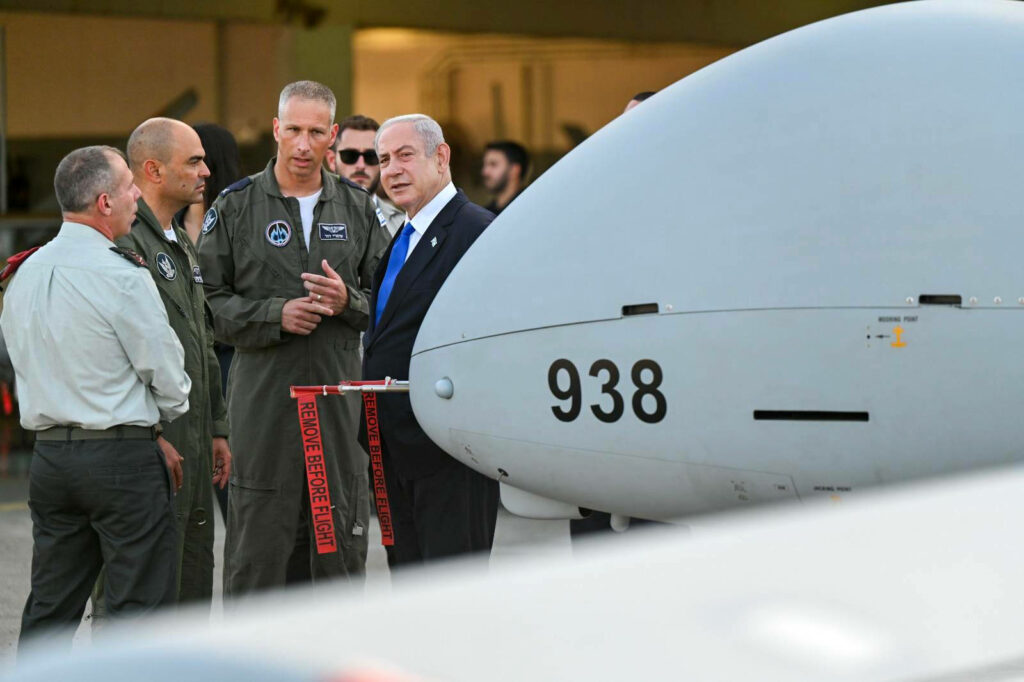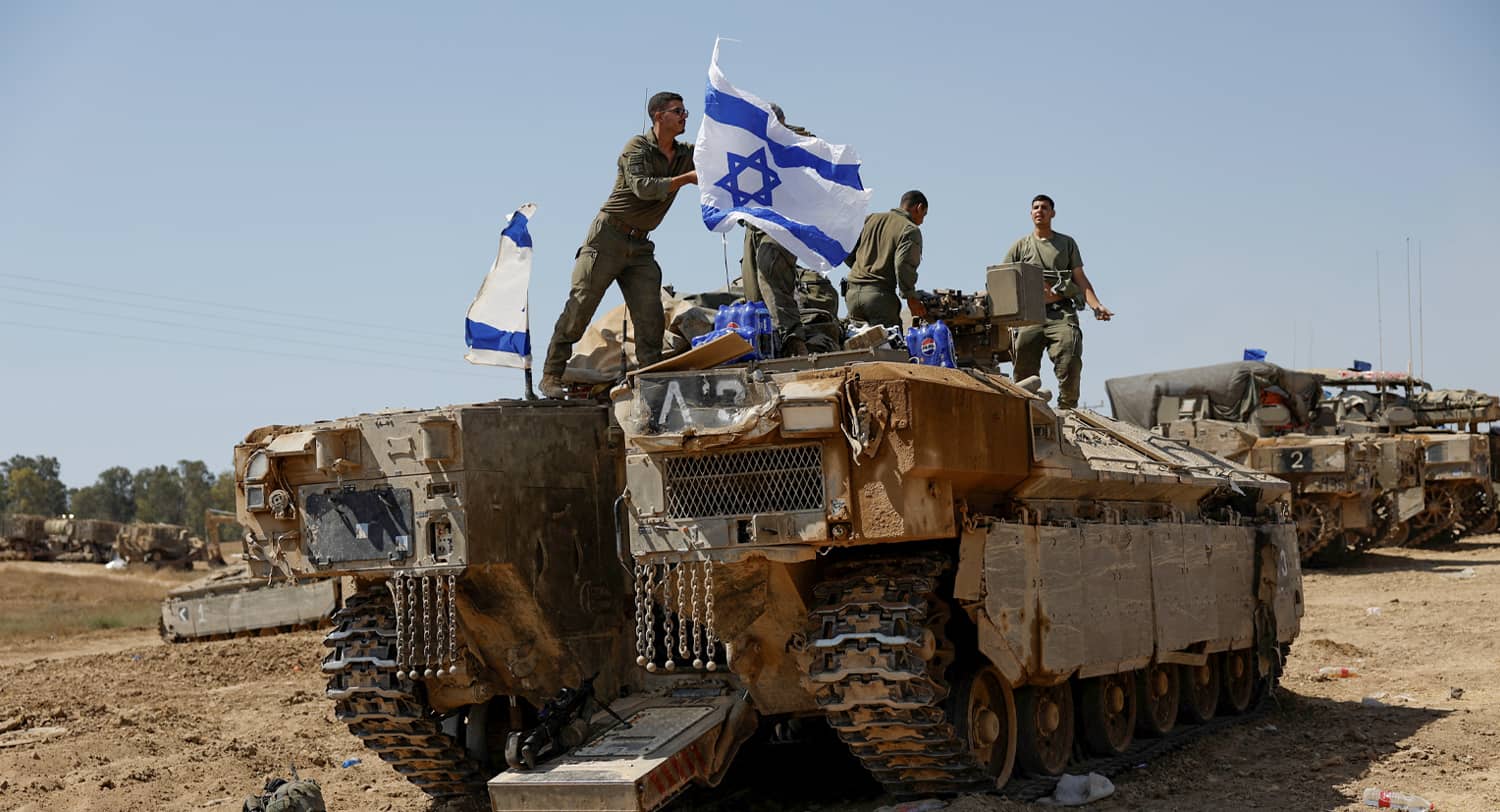In the midst of the current war in Gaza, the Israel Defense Forces is evaluating its future force needs. Three Israeli insiders have differing views on the desirable future size and composition of the IDF.
More Strategic Planning
Moni Chorev, former division commander and general in the reserves, told me the following: The IDF must plan its force build-up following a set methodology, rather than improvising as one goes along, increasing the numbers of divisions or military platforms in piecemeal fashion in reaction to current threats.
“I don’t like the approach that says we need more tanks, more intelligence collection tools, more drones. We need to talk about planning before going into lists.
“Producing more tanks, drafting the ultra-Orthodox – if we don’t implement a national strategy that reflects an evaluation of our threat situation, and adopt a methodology for force buildup, we are simply left with a wish-list and the intuition of commanders. That would be a disaster, also economically, because a wish list will be very hard to cover budget-wise.”
Chorev sees some similarity between such a scenario and the ‘lost economic decade’ that followed the IDF’s massive expansion after the 1973 Yom Kippur War. This period saw the IDF dramatically increase its number of ground divisions. Then following a series of economic crises, the IDF spent over three decades, starting in the late 1980s, decreasing its size again.
Defining the future IDF force structure, Chorev stresses, should be managed out of the National Security Council as a pre-eminently political matter that includes a diplomatic strategy and requires economic planning. “It cannot be left in the IDF’s court alone.”
Israel faces a six or seven-front situation, he noted, including Hizbullah in Lebanon, terror factions in the West Bank, and Iranian proxies in Yemen, Iraq, Syria as well as Iran itself. Gaza, after the dismantling of Hamas, should require reduced forces but remains a seventh front.
He also highlighted the necessity of forming a regional defense alliance led by the United States. Such an alliance would enable Israel to ‘hand off’ threats from more distant arenas – Iran, Iraq, and Yemen, to international, primarily American, forces.
“The assumption of six fronts means that Israel must now be prepared for long, drawn-out wars. That requires national resilience and here, drafting the ultra-Orthodox becomes relevant, as part of a national plan that mandates sharing the burden.”

More Technology and Air Force-Special Forces Cooperation
Azar Gat, professor of national security studies at Tel Aviv University, agrees with Chorev that since the late 1980s, the IDF’s force structure has been significantly reduced. The number of tanks was cut to about one-third of its peak in the 1980s, Gat writes, and the number of combat field divisions was cut in half. The IDF currently has seven divisions, according to public information – similar to the number that it had during the 1973 Yom Kippur War, before the expansion of the Israeli order of battle that followed the war.
Yet, despite the reduction in field divisions, the IDF mobilized approximately 300,000 reservists during the height of the Gaza conflict, demonstrating the critical role of reserve forces, which gave Israel a massive numerical advantage – though at a cost to the national economy.
At the peak of the Gaza war, the IDF deployed four divisions in Gaza, more than against Egypt in the 1967 Six Day War and the 1973 conflict. This occurred at the same time as IDF Central Command aggressively targeted terrorist capabilities in the West Bank, and the IDF deployed forces on the northern border against Hezbollah.
Gat also agrees with the six-front threat situation, but concludes that ground forces are not relevant for distant theaters outside of Gaza, the West Bank and southern Lebanon.
The air force, in coordination with special forces and sometimes the navy, would handle the main activities in these areas, he stated.
Despite claims that the air force is now prioritized over ground forces, the air force’s share of the IDF budget has remained stable at about 50 percent since the 1960s. Its number of aircraft has also been halved in recent decades, per Gat. The air force supports ground forces and reduces their casualties in Gaza through precision bombing strikes.
“Despite the failure of intelligence and technology-based systems on October 7, the IDF’s great advantage in the ground invasion of Gaza, aside from the heroism and determination of its troops, lies primarily in technology. The ground forces, air force, intelligence, and other firepower units, closely communicating and cooperating, possess unprecedented capabilities in rapidly identifying and destroying Hamas fighters and their positions in highly complex urban and underground environments.”
Future investments, he concludes, should include both reinstating the mandatory military service of three years and, most importantly, “further enhancing technological capabilities, not in increasing the number of its field formations and tanks.”

A Larger Maneuver Force
In fundamental disagreement with Gat are Eado Hecht, a senior fellow at the Begin-Sadat Center of Bar Ilan University, and Eitan Shamir, director of the Center and a former senior official in the Strategic Affairs Ministry. Hecht and Shamir wrote as follows:
“The continuing inability of the IDF to realize the goals of the current war is mainly the result of a lack of maneuver units, a lack that military technology cannot compensate for no matter how good it is. If the IDF is to fulfill its responsibilities, it needs more well-trained maneuver divisions to resurrect the territorial defense organization as well as technological superiority.”
On October 7, the IDF had 400 soldiers and 12 tanks to defend a 60-kilometer Gaza front – inadequate even without considering the surprise achieved by Hamas. According to Hecht and Shamir, the IDF had redeployed forces to the West Bank over the past two years owing to a sharp increase in Palestinian attacks there.
On the eve of October 7, they also noted, the situation on the Lebanese border was no better than on the Gaza border, with similarly inadequate force sizes.
In Gaza, the IDF’s achievements are good but insufficient, with the task of destroying Hamas incomplete. Many reservists had to be discharged, reducing the active fighting force.
A larger regular ground force on October 7 would have ensured a solid front against Hizbullah and allowed for a simultaneous multi-sector attack across Gaza. Because of this lack of regular forces, and inability to attack all sectors of Gaza simultaneously, the IDF opted for a sequential attack, leading to a prolonged conflict with negative strategic ramifications.
While recruiting more reserve units is part of the solution, it is not sufficient owing to cuts in reserve units and concentration of reserve call-ups among a relatively small group of people, warn Hecht and Shamir.
Conclusion
The IDF must grow its ground forces. Israel requires the ability to conduct security operations in both Gaza and the West Bank while also keeping forces on stand-by for a major ground offensive into Lebanon at a moment’s notice. A Lebanon offensive could also turn into a lengthy period of security operations.
A small ground army will not be sufficient to operate in, and hold, all three arenas simultaneously, and this appears to be a minimum requirement going forward. The IDF was active in all three arenas on the ground in the 1980s. It should anticipate and build future contingencies on a three-arena model, while the National Security Council should lead efforts to solidify the regional alliance to deal with Iran and its proxies further afield.

